Questões de Língua Inglesa da Fundação Getúlio Vargas (FGV)
Lista completa de Questões de Língua Inglesa da Fundação Getúlio Vargas (FGV) para resolução totalmente grátis. Selecione os assuntos no filtro de questões e comece a resolver exercícios.
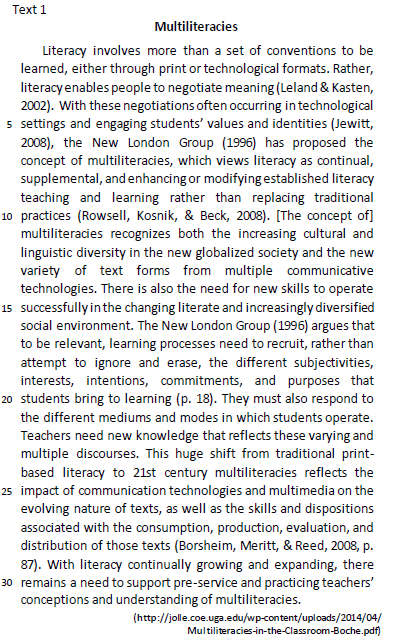 The options below offer statements that agree with constructions of multiliteracies, as presented by Text 1, except:
The options below offer statements that agree with constructions of multiliteracies, as presented by Text 1, except:
- A. They do not do away with accepted models.
- B. They take into account global linguistic diversity.
- C. They recognize multicultural perspectives in education.
- D. They provide a toolkit designed to be used by the student.
- E. They assume a variety of means and ways of communication.
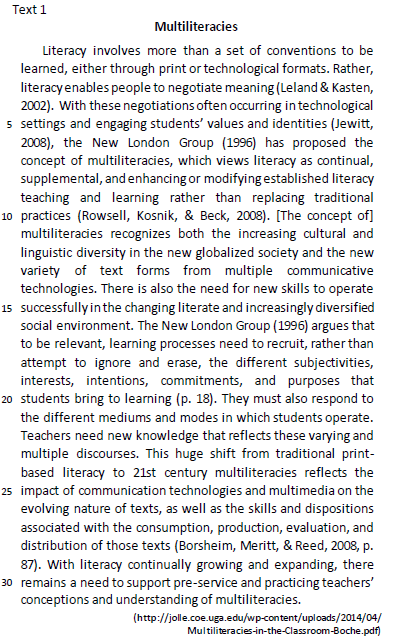
Match the strategies offered below to the different teaching perspectives.
1. Multiliteracies posture
2. The Audio Lingual method
3. The Grammar-Translation method
4. Communicative Language teaching
( ) Presenting target-language reading passages and answering questions that follow.
( ) Discussing cultural diversity through different means such as written texts and blogs.
( ) Repeating patterns until students are able to form new habits in the target language.
( ) Offering students authentic materials that may function as triggers for classroom interactions. Mark the option which indicates the correct matching, from top to bottom.
- A. 1, 3, 2 and 4.
- B. 3, 1, 2 and 4.
- C. 4, 1, 3 and 2.
- D. 2, 4, 3 and 1.
- E. 4, 3, 2 and 1.
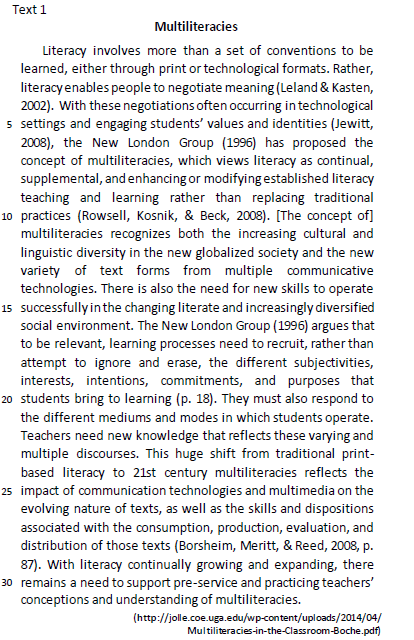
Read the following extract from Text 1: Multiliteracies recognizes both the increasing cultural and linguistic diversity in the new globalized society and the new variety of text forms from multiple communicative technologies. (L.11-14)
The alternative from Lotherington (2006) that has some analogy to this passage is:
- A. The virtual world is not culturally neutral territory: it is colonial.
- B. The role of modern education was to prepare learners for the workforce.
- C. The Internet continues to be dominated by users in rich Western nations.
- D. The autonomous model [ ] approaches literacy as a cognitive advancement.
- E. Literacies in the twenty-first century have been described as fundamentally multicultural, multilingual and multimodal.
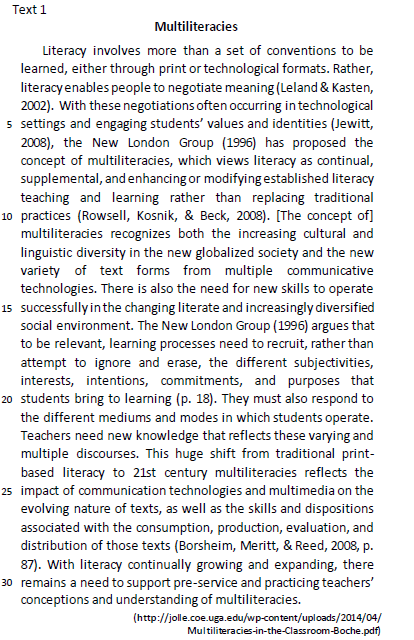 In the passage To be relevant, learning processes need to recruit, rather than attempt to ignore and erase, the different subjectivities, interests, intentions, commitments, and purposes that students bring to learning (L.17-20), the author implies that teachers should
In the passage To be relevant, learning processes need to recruit, rather than attempt to ignore and erase, the different subjectivities, interests, intentions, commitments, and purposes that students bring to learning (L.17-20), the author implies that teachers should
- A. see their students as a uniform group.
- B. ask the best students to teach the others.
- C. keep to printed materials and traditional methods.
- D. stimulate students to acknowledge identities.
- E. opt for a time-honored methodology when teaching.
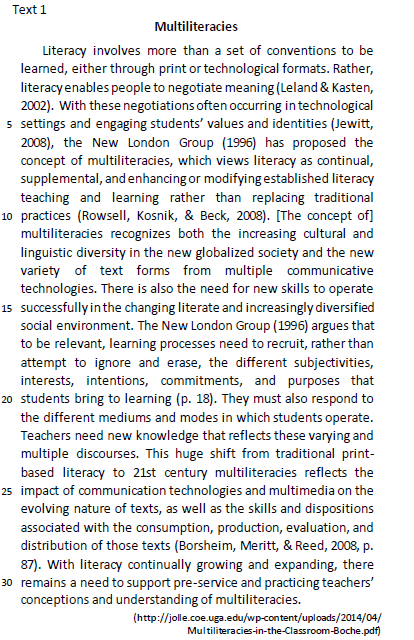 According to Duboc (2016, p. 62), critical literacy differs from critical reading as the former holds that:
According to Duboc (2016, p. 62), critical literacy differs from critical reading as the former holds that:
- A. Any reading requires silent and isolated contexts.Individual reading should privilege explicit text data.
- B. Individual reading should privilege explicit text data.
- C. Readers should always try to identify authorial intention.
- D. The reader must look for information provided by the text.
- E. Reading is an exercise which considers a diversity of meanings.
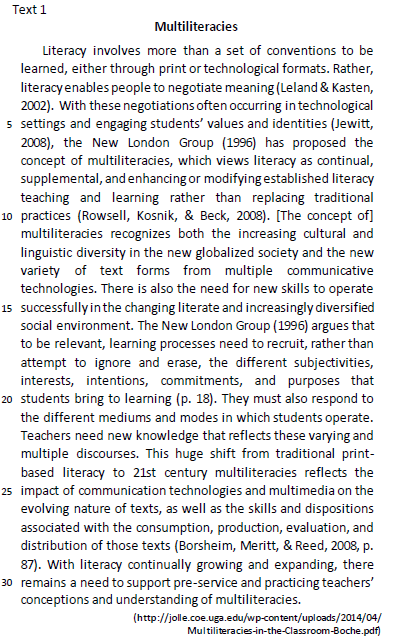 The digital age has been disrupting the normative structures of education in many ways. According to Bohn (2013, p. 97), one of the challenges language educators now face is
The digital age has been disrupting the normative structures of education in many ways. According to Bohn (2013, p. 97), one of the challenges language educators now face is
- A. offering students means to exercise brain plasticity.
- B. making sure students access the Internet from home.
- C. insisting that schools provide tablets for each student.
- D. designing materials that integrate written texts and oral skills.
- E. paying close attention to students language proficiency level.
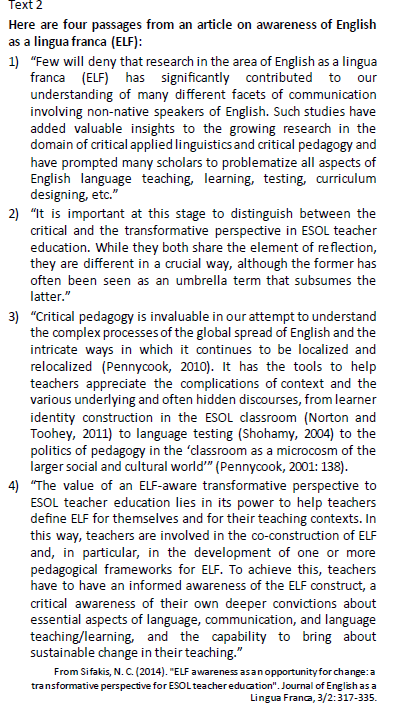
The following sentences present information provided in each of the passages from Text 2. Read them, add the corresponding number of each passage (1 to 4), and mark the option that presents the correct sequencing:
( ) Both perspectives attribute value to reflection.
( ) The classroom should be seen as part of a wider context.
( ) ELF teachers are stimulated to reflect on their own teaching.
( ) ELF studies have had great impact on English language teaching.
- A. 4 3 2 1.
- B. 3 4 1 2.
- C. 2 3 4 1.
- D. 4 2 1 3.
- E. 2 4 1 3.
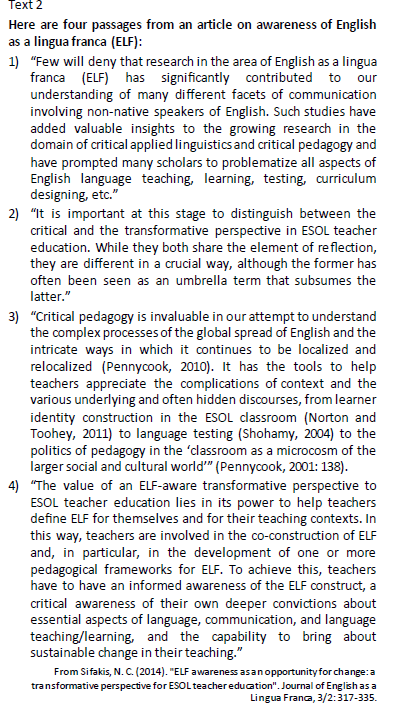
As regards Passage 2, analyse the assertions below:
I. A critical orientation may include a transformative view.
II. Critical and transformative perspectives in ESOL are indistinguishable.
III. Transformative perspectives are wider than critical orientations.
Choose the correct answer:
- A. Only I is correct.
- B. Only II is correct.
- C. Only III is correct.
- D. Only I and II are correct.
- E. All three assertions are correct.
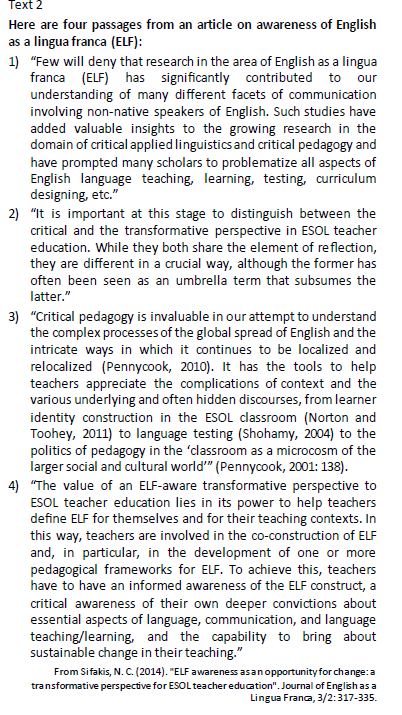 Passage 4 suggests that a transformative perspective to ESOL teacher education requires that teachers become more
Passage 4 suggests that a transformative perspective to ESOL teacher education requires that teachers become more
- A. fluent in the target language.
- B. self-reflexive of their practice.
- C. resistant to challenging concepts.
- D. determined to fight against change.
- E. involved in raising funds for the school.
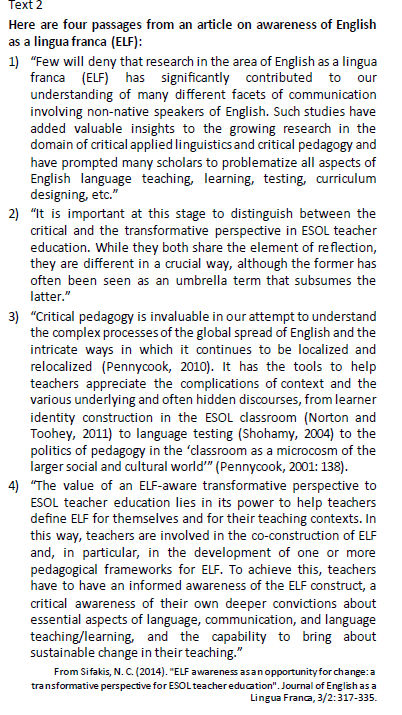 According to Jordão (2013), critical pedagogy differs from structuralist pedagogies because, among other reasons, it
According to Jordão (2013), critical pedagogy differs from structuralist pedagogies because, among other reasons, it
- A. aims at pre-set results.
- B. invests in memorization.
- C. promotes situated learning.
- D. measures proficiency levels.
- E. prioritizes content acquisition.


